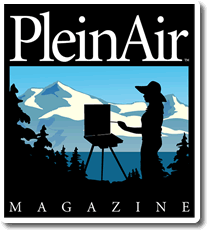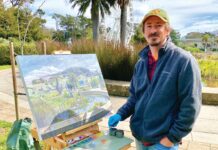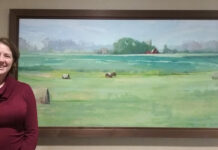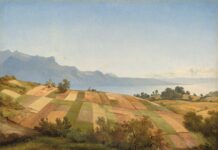Kathryn Stats: “One simply can’t be a good studio painter unless one paints directly from nature outdoors.”
“Painting is an adventure that sometimes rewards and sometimes disappoints,” says Kathryn Stats. “The longer I paint, the more aware I am of the potential for things to go wrong, and the more I try to remember how to avoid those missteps.”
Knowing about those potential missteps is one of the things that makes Kathryn Stats a great painter and a helpful teacher. She can give advice based on years of experience about the materials, techniques, and concepts that have the potential to make painting a “rewarding adventure.” For example, she might explain that she changed her brushes to avoid overworking a painting with detail, started toning the surface of a canvas to keep compositions from becoming too light or too dark in value, or learned to put a troubled painting aside until she knew how to finish it.
“I have a basic palette of tube colors that includes ultramarine blue, cobalt blue, cerulean blue, titanium white, lemon yellow, cadmium yellow light, cadmium yellow deep, yellow ochre, cadmium orange, cadmium red light, permanent red, alizarin crimson, Indian red, burnt sienna, and transparent red oxide; then I have a few guilty colors I add occasionally, like quinacridone red, cadmium red light, and napthol red,” Stats explains. “I have some deep passages in my brain that I wander through when I feel the need to experiment with new colors and odd color combinations.”
Stats cautions, “I always make small compositional sketches before I start painting because if I don’t, I’m likely to regret the omission later on, when it’s difficult to make radical changes in the arrangement of shapes, values, colors, or spatial relationships. I make three or four sketches with a black permanent marker to determine which composition will have the most impact, and then I paint a quick three-tone gray value study on the canvas to test my idea on the full-size painting. I warn my students that their brains can’t handle too many choices, so they need to deal with spatial composition first, value relationships next, and then color.
“I follow the recommended method of painting from lean to fat, meaning that the initial masses of colors — especially the darks — are thin, and then I work with heavier applications of oil color as I build towards the lightest values. When I’m painting on location, I try very hard not to build up the thickness of the paint too quickly, because it can become too slick to accept the last aspects of dark and light values. I also make a point of saving the bright highlights until the very last stage of the painting process because, in my experience, too many painters rush into painting the light values and wind up with no place to go.”
Stats adds emphatically, “I’m a firm believer in the value of working outdoors from nature, and I’m not shy about saying one simply can’t be a good studio painter unless one paints directly from nature outdoors. That said, I seldom finish a painting on location. I take digital photographs of the subject when I start painting, and then I enlarge those on a computer monitor to help me complete the painting in the studio. If the plein air piece is promising enough, I will use it as the basis of a larger studio painting, again using my digital photographs to guide me through the initial stages of painting the larger composition. Of course, there is always a point at which the photographs and references need to be put away and one must simply do right by the painting.
“There are a lot of clear memories locked in my older plein air paintings, and I can open them up whenever I need ideas for making a new painting better. Sometimes I need to tone down the colors and make them more harmonious. At other times, I need more detail to balance the magnetic pull of the focal point. If I can’t figure out what a painting needs right away, I put it away for a while, and eventually the best solution to the problems will pop in my head.”
For more information, visit www.kathrynstats.com.




